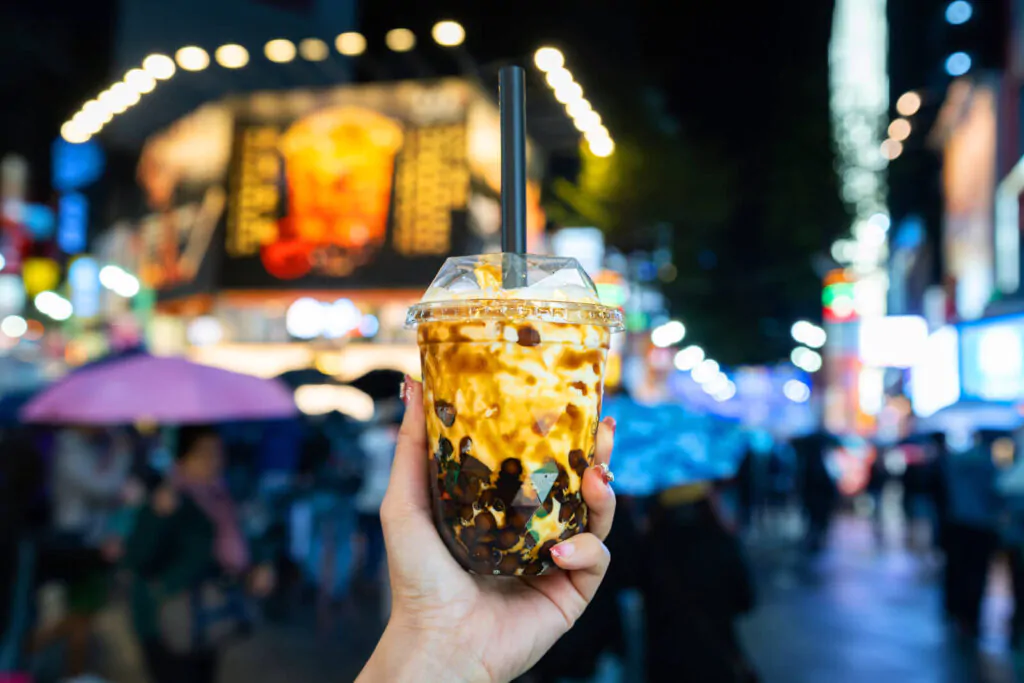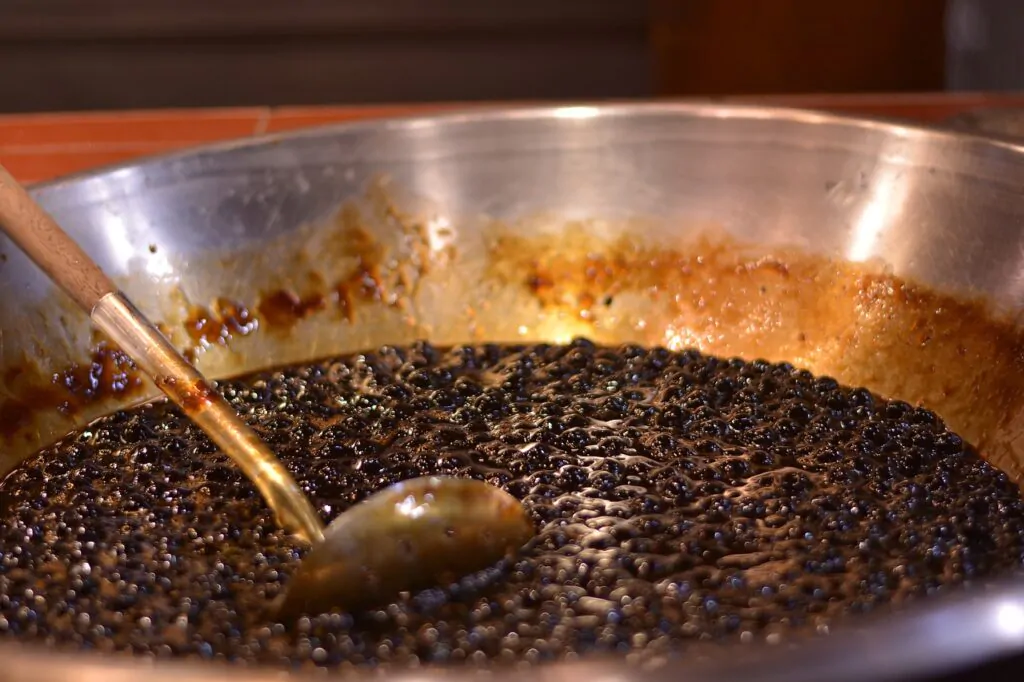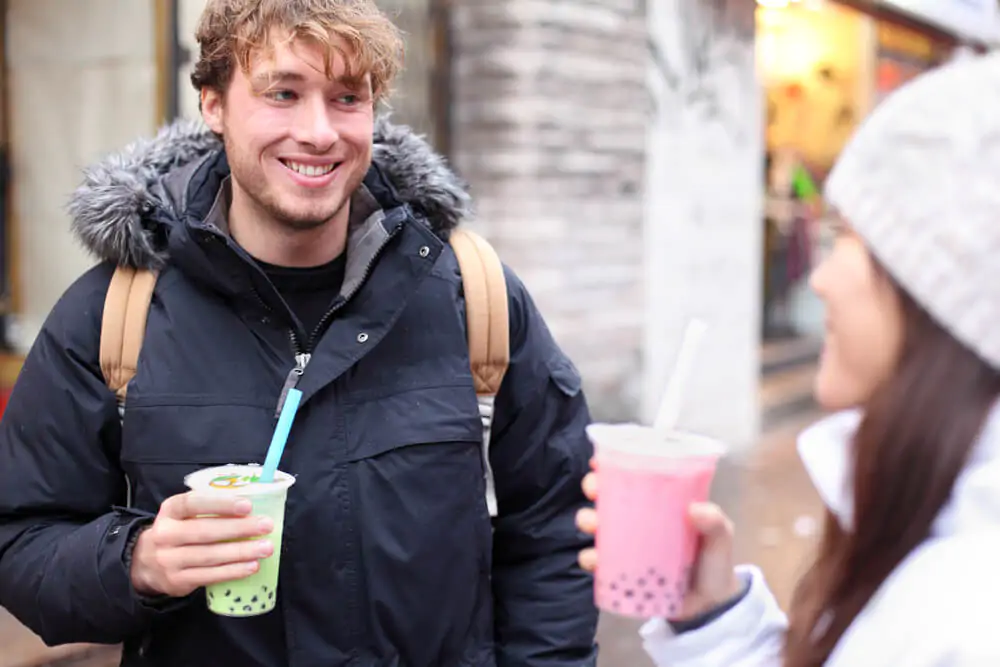Bubble tea or Boba tea, which originated from Asia, has now become the trending drink worldwide. But what is Boba made of anyway? Read to find out more.

There is no getting around it; drinking bubble tea can get a bit peculiar for the uninitiated. Those small, chewy balls with the weird texture and slight sweetness could be made from just about anything! So, what is boba made of? Don’t panic; there isn’t much more to them than tapioca starch and sugar water!
What Is Boba Made Of?

Things get immediately confusing whenever anyone starts discussing bubble tea — beginning with what to call it. In China, the drink’s name is ‘Zhen zhu nai cha,’ meaning ‘pearl ball milk tea’ to distinguish it from the more popular way of drinking tea without any milk or sweeteners. But in the US, the same drink has many names, including pearl tea, bubble tea, milk tea, or boba tea.
For the sake of clarity, in this article, I will refer to the drink in its entirety as bubble tea. I will use the term ‘boba pearls’ when talking about the tapioca starch balls in bubble tea.
As if the name itself isn’t complicated enough, then there is the almost limitless number of flavors, toppings, and add-ins that can wind up in a cup of bubble tea. It is not unusual for the tiny shops selling bubble tea to offer dozens of different options their customers can choose from. Many of these flavors of bubble tea don’t even contain any actual tea at all.
The Art of Making Boba Pearls

While each bubble tea shop tends to put its own spin on the drinks they serve, there’s one thing that remains constant, the use of the boba pearls themselves. However, not all boba pearls are the same. And believe it or not, for bubble tea fanatics, the tea portion of the drink comes a distant second to the quality of the boba pearls when it comes to ratings.
It Is All In The Texture
Most bubble tea shops buy inexpensive dried boba in bulk and then reconstitute them in boiling water and sugar until they reach the correct consistency. If you have ever had a boba that is still hard in the center, you know how important it is to get this step right.
The Chinese even have a term they use to describe the perfect combination of softness and chewiness of a boba. Chinese cooks call it ‘Q,‘ or ‘QQ’ (very Q), and pronounce it the same as the English letter. Some people claim that the origin of the term comes from the Hokkien word ‘k’iu,’ but others have their doubts.
Making High-End Boba Pearls
Just like how third-wave coffee shops elevated the status of coffee, there are bubble tea shops out there trying to do the same thing for their beverages. These mostly independent shops are taking their cue from the past and returning to using traditional ingredients and methods.
Traditional boba pearls only require three ingredients: water, Taiwanese black sugar (or more often dark brown sugar outside of Taiwan), and tapioca starch made from cassava root. That means that boba pearls are both gluten-free and vegan!
It is easy to tell homemade boba pearls from mass-produced ones because the handmade variety is never black but various shades of brown depending on how much and what type of sugar they contain.
How To Order Bubble Tea
Start by choosing the type of liquid base you want for your drink. The choice is typically between black or green tea, but there are many other possible options, including fresh fruit teas such as peach, apple, orange, watermelon, and kiwi. If you are ordering a milk tea, some shops allow you to select non-dairy milk such as soy or oat milk.
In addition to boba pearls, you can choose from a broad assortment of add-ins like aloe vera cubes, taro balls, and red beans (it’s better than you think)! If that’s not enough for you, then try adding a pudding, jelly, cream, or even cheese(!) on top.
Lastly, you can tell your server how sweet you want the drink. Typical choices include no sugar, 30-percent, 50-percent, 75-percent, and 100-percent. The best thing to do is ask for 50-percent sugar or less since you can always try it and ask for a little more sugar if necessary.
How To Drink Bubble Tea

Most traditional bubble tea shops will use a machine to seal the top of their cups with plastic wrap. Don’t try to peel off the plastic. Instead, punch through it using the pointed end of an extra-wide straw.
Some Westerners save the boba pearls in their drink to eat after finishing all the liquid. Please don’t do that. You are supposed to chew them while drinking.
Final Word on What is Boba Made Of?
The perfectly made boba pearl will make or break your bubble tea experience, so choose the best quality you can find. Talk to the manager of your local bubble tea shop to encourage them to offer traditional boba pearls. Or, you can try making them on your own using this recipe from The Washington Post.
FAQs About What is Boba Made Of?
Are boba pearls good or bad for you?
There isn’t anything inherently dangerous about eating boba pearls. However, just like any other starch, tapioca starch contains a high level of carbs. In addition, they have sugar. If you are on a carb or sugar-restricted diet, you probably shouldn’t be drinking bubble tea.
How many boba pearls should there be in your bubble tea?
If you are going to go through the trouble of ordering bubble tea, there had better be a lot of boba pearls in it. There are plenty of inexpensive bubble tea shops that skimp on the boba pearls to save money, but most respectable ones fill the cup a quarter to a third full.
